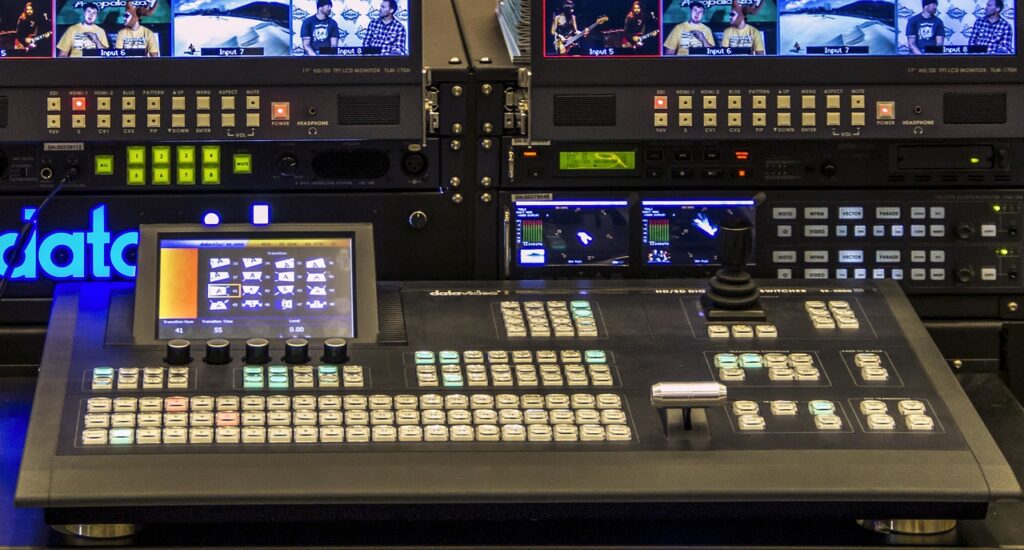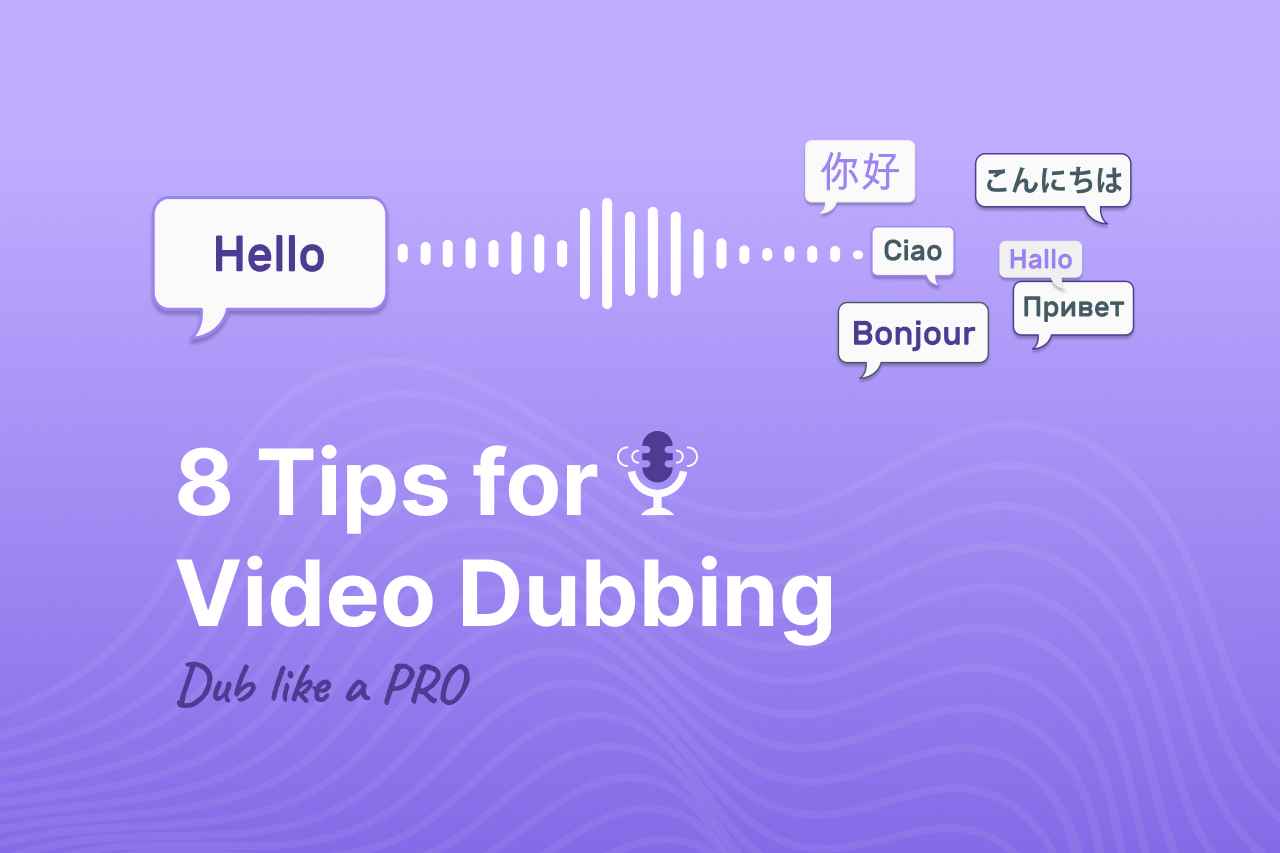With the rise in the creator economy, it becomes imperative for you to seek new ways to reach more people. Dubbing your videos in new languages is one proven way to grow your audience in 2023, especially with YouTube’s new feature launch of multi-language audio track support.
In the UK and US, two-thirds of the population consume foreign language content. As of last year, 86% of Russian adults revealed they prefer to watch dubbed content over subtitled content, a view shared by most respondents in Germany, Italy, Spain, and France.
Here’s how dubbing your videos into multiple different languages can benefit you:
Benefits of Video Dubbing:
Increased Reach
Dubbing videos into new languages can help you expand your audience regardless of your native language. By making your content accessible to people who speak different languages, you increase your viewership and grow your brand.
Better Cultural Representation
Dubbing your videos into local languages ensures the content resonates with local audiences and is culturally sensitive, which builds trust and establishes a stronger connection.
Improved Engagement
Dubbed videos engage audiences more effectively than subtitled videos because people pay more attention to the dialogue and are more likely to immerse themselves in the story when they can hear it in their native language.
Boosted Accessibility
Dubbing videos into new languages can make them more accessible to people with hearing difficulties or those who struggle to understand a different language. This will establish a sense of inclusivity among your audience.
Better Search Engine Optimization (SEO)
By adding targeted keywords to your dubbed videos, you can boost your search engine optimization (SEO), improve visibility in search results and reach more people already searching for the content in their language.
Increased Revenue
With dubbed videos, you can tap into new markets and reach new audiences, which can ultimately attract new customers, expand your customer base, generate more sales and increase your business revenue.
Improved User Experience
Dubbing videos into local languages can also enhance the user experience by making the content more user-friendly and accessible. This will help to build brand loyalty and increase customer satisfaction, leading to greater engagement and repeated business.
8 Tips For Video Dubbing in Another Language
Now that we’ve established the significance of multilingual dubbing, let’s discuss 8 must-know tips for dubbing content into other languages. Although a lot of these will vary based on the type of medium you choose to dub (such as traditional dubbing with a voice actor or AI dubbing) they are applicable to most use cases.
1. Start With a High-Quality Script
A well-written script is foundational for a successful dubbed video. It should be grammatically accurate and culturally appropriate for the target audience. This will ensure that the dubbed dialogue is not only true to the original content but also engaging and accessible to the target audience.
To avoid any misunderstandings or misinterpretations, work with a professional translator who is familiar with the target language and culture.
2. Choose the Right Voice
The voice you choose will play a critical role in the success of your dubbed video. If you plan on going the traditional route and hiring voice actors, they should have the experience, skills, and talent to bring the script to life and deliver authentic and engaging performances. Consider casting voice actors who have a natural-sounding voice, good pronunciation, and clear delivery. This can, however, be costly. So, you can look out for AI voices.
3. Consider Lip Sync
Lip sync refers to the process of synchronizing audio dialogue with the movements of the characters’ lips in a video or film. If lip sync is not considered during the dubbing process, the characters’ lip movements may not match the audio, which can result in a jarring and distracting viewing experience.
To ensure a natural and seamless viewing experience, carefully analyze the timing and rhythm of the original dialogue and the character’s lip movements. This requires close attention to detail and may involve making adjustments to the translated script or the timing of the dubbing.
4. Consider Cultural Differences
When dubbing video content to other languages, ensure you localize content to cultural needs to make a great first impression on your audience. Being sensitive to cultural differences includes everything from idiomatic expressions to social and political attitudes. You should aim to make your dubbed video culturally sensitive and appropriate for the target audience.
For example, certain gestures, expressions, and jokes may not have the same impact in different cultures, and it’s essential to modify them accordingly.
5. Ensure a Professional-like Sound Equipment
The audio quality of your dubbed video is just as important as the visual quality. Make sure you use high-quality sound equipment, including microphones and audio mixing software, to produce clear and professional-sounding audio. Good audio will make the dubbed dialogue sound natural, allowing the audience to focus on the story, rather than being distracted by technical issues.
With AI tools like Dubverse, you need not worry about getting the perfect microphone and soundproofing to get top-quality dubs in a matter of seconds.

6. Hire Experienced Dubbing Engineers
Traditional dubbing is a complex process that requires technical skills and experience to execute effectively. Consider hiring experienced dubbing engineers who have adequate knowledge and expertise to manage the recording process to produce high-quality dubbed audio. They will also be able to make any necessary adjustments to the sound quality and timing of the dubbed dialogue to ensure that it fits seamlessly into the video.
7. Opt for AI Dubbing
Choosing AI dubbing for your multilingual content has several advantages, especially if you have time and budget constraints but still want high-quality videos. AI dubbing tools like Dubverse offer a wide range of language options, including Indian and global languages, and uses a plethora of AI voices to generate natural-sounding voiceovers.
Furthermore, Dubverse also provides professional review services, ensuring that your final output is of the highest quality. By choosing AI dubbing, you can save time and money while still producing engaging, multilingual content that will resonate with audiences around the world.
8. Test the Dubbed Video
Once you have completed the dubbing process, test the dubbed video thoroughly. This will give you the opportunity to identify areas for improvement and fix any technical issues. You should also consider getting feedback from the target audience to ensure that the dubbed video is interesting and relevant to them. Use the feedback to make necessary adjustments to the dubbed video before it’s released to the public.
With Dubverse, you get access to professional reviewers who can test the quality, translation, and message of your dubbed content for you!
Happy Dubbing!
All in all, dubbing content into multiple languages is an effective way to reach a wider audience and increase accessibility. With advancements in technology, the process of dubbing has become more efficient and cost-effective, enabling more content creators to produce high-quality multilingual content. This not only benefits the content creators but also provides a more inclusive viewing experience for audiences around the world. We hope our tips will help you create better and more effective multilingual content for your audience!


